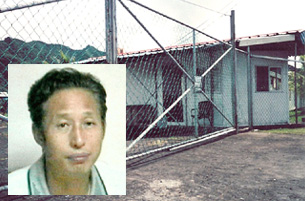
ANATOMY
OF AN INTERNATIONAL HUMAN TRAFFICKING CASE, PART 2
Kil Soo Lee and the Case
of the Samoan Sweatshop
07/19/04
Today,
the rest of the Kil Soo Lee story.
What did it take to bring this criminal to justice?
It
took a concerted, international effort. Why? Because:
... Among
victims, witnesses, and others involved in the case, four different languages
besides English were spoken -- Korean, Vietnamese, Chinese, and Samoan.
...
Kil Soo Lee had financial and business dealings not just in American Samoa, but
in South Korea, New York City, and elsewhere.
... When Lee ran into financial
problems and was forced to shut down the plant, the workers (now key witnesses
to Lee's crimes) scattered across the world. Some were deported to their native
lands before investigators arrived; more than 200 workers were given temporary
visas so that they could testify at trial, but they then settled in some 20 different
states around the country, making it hard to contact them.
So
where'd we start? Of course, with our Special Agents. Agents from the
FBI office in Honolulu, which covers American Samoa, made the 2,000-mile trip
to the island. They began initial interviews; surveyed the factory; seized records,
computers, and other evidence; and started plotting out investigative strategies.
Within
days, agents had quickly gathered enough information to arrest Kil Soo
Lee before he could flee U.S. soil. But to build a strong case, a team of experts
around the world helped gather more evidence:
... Agents in some 20 different
FBI offices, stretching from coast to coast, interviewed witnesses and served
grand jury and trial subpoenas.
... Our Vietnamese, Chinese, and Korean language
specialists translated documents and served as interpreters during interviews.
... Our victim witness specialists nationwide helped the victims who stayed
in the U.S. find services and kept them informed of case developments.
...
FBI offices in Seoul and Bangkok ran down leads with the help of overseas partners.
... Our computer experts extracted digital evidence from seized computers, and
financial analysts and paralegal specialists dealt with complex financial issues.
... And, law enforcement partners in places like Honolulu and American Samoa
– along with U.S. government officials in the Department of Justice, the
Labor Department, Immigration, and Customs – worked closely with the FBI
from start to finish.
The
results? Last year, Kil Soo Lee was found guilty on 14 counts -- including
human rights violations, money laundering, and extortion. He is scheduled to be
sentenced on October 29. Two associates, including the factory manager, were also
convicted.
And
the victims? More than 200 have remained in the U.S., finding jobs and
making new lives for themselves. It's to them that this case is dedicated.
Link:
Involuntary Servitude/Slavery
